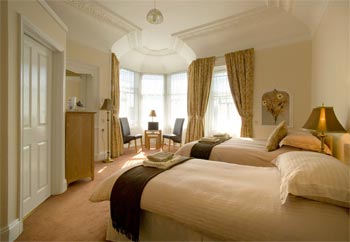January 30th, 2009
Period styles reflect the design motifs that were created at various periods in history. They are usually a reflection of the social and economic trends popular at that time. Certain colors are associated with particular period styles. Colonial and Federal periods are rich with deep, dark reds, greens and blues. The English periods include the graceful 18th-century Georgian period, which produced the furniture styles of the great cabinetry makers of the era: Adam, Chippendale, Hepplewhite, and Sheraton. This period also featured colors with rich hues and scenic wallpapers.
The American Federal period was inspired by the neoclassical revival. Walls were painted plaster or covered with formal papers from Europe and Asia. Symbols of the eagle and other classic American revolutionary symbols were prevalent. The best-known example of the Federal style is Thomas Jefferson’s home, Monticello.
Colonial style recreates the look of nineteenth-century European colonial experience, when the early settlers had to make do with furnishings that were primitive, imported or both. The popular Colonial Revival in the late 19th century created what many people today think of as Colonial style: a mixture of American Country with its painted wood paneling and stenciled folk art, Boston rocking chairs and Windsor chairs of early Federal style.
French period styles include elaborate scrollwork and decoration. Neoclassical Louis XVI furniture featured straight lines and geometric motifs.
The Victorian period includes a great diversity of styles. The look we generally think of as Victorian is a mixture of many characteristics. During that period, known as the “Industrial Age,” people were surrounded by such inventions as proper plumbing, the motor car and the first electric lift. Designers were able to take advantage of an incredible range of new chemical dyes. The styles reflected the prosperity of the time. Interior design motifs ranged from the elegant lines of the early Victorian interiors with light greens, lilacs and yellows, to the mid-Victorian period, characterized by overstuffed furniture and richly colored dark rooms. Victorian style also includes needlework rugs, floral prints and patterns, elaborate window treatments and grandfather clocks.
Victorian furniture, in all the different styles of the period, is still relatively cheapâ€â€one reason this design style remains popular throughout the world.
Tags: furniture, style
Posted in Furniture general info | No Comments »
January 29th, 2009
How do you cover fanlightsâ€â€those half-round, Palladian-style windows that arch above regular windows? Some people just can’t leave them alone, topping them with Easter-bonnet swags or obscuring them with pleated fanlike shades.
Better to let a fanlight breathe. Hang simple blinds or draperies that cover only the main rectangular window. Or install curtains from a rod above the fanlight, as some designers do. Both treatments have the virtue of simplicity, always a good approach to architectural ornament.
Tags: lighting, Living Room
Posted in Living Room | No Comments »
January 28th, 2009
 To underscore a gorgeous window treatment, try to install downlights in the ceilingâ€â€a bigger project (involving electrical work and, sometimes, plastering) than you may desire. The low-budget version? Plant an uplight, available at any lighting store, at the foot of the draperies, concealing the fixture behind a piece of furniture. This looks especially good with sheers, though be aware that outsiders can see through lighted sheers at night. (Translation: Restrict this effect to the living room.)
To underscore a gorgeous window treatment, try to install downlights in the ceilingâ€â€a bigger project (involving electrical work and, sometimes, plastering) than you may desire. The low-budget version? Plant an uplight, available at any lighting store, at the foot of the draperies, concealing the fixture behind a piece of furniture. This looks especially good with sheers, though be aware that outsiders can see through lighted sheers at night. (Translation: Restrict this effect to the living room.)
Tip: Buy an incandescent uplight Halogen bulbs can be a fire hazard if placed near fabric or furnishings.
Tags: draperies, Living Room
Posted in Living Room | 2 Comments »
January 27th, 2009
For a sophisticated sheer that is worthy of the living room we devise a treatment that is half curtain, half shade.
Hem (at top and bottom) a flat panel of sheer fabricâ€â€wool, linen, even a sheer metallicâ€â€so it precisely covers the window like a banner. Slip a brass curtain rod through both hems, let-ting the ends of the rod extend an inch past the shade on either side. Hang the top rod from hooks on the wood trim so the sheer drapes before the window like a delicate flag.
To raise the shade, you’ll need to install a pair of cup hooks or plant hooks, one on each side of the window, as high as you can comfortably reach. Lift the bottom rod and set it in the hooks.
The top of the window will still be veiled by the sheer; the bottom reveals a partial view and can now admit the breeze.
Tags: curtains, design, furniture, Living Room
Posted in Living Room | No Comments »
January 26th, 2009
 The new spacious master bedroom is a casual spot where kids play while Mom and Dad relax. Soft, low-maintenance furnishings create a space that’s as welcoming to children as it is to adults. By making the room accessible to everyone, you can spend more time together as a family.
The new spacious master bedroom is a casual spot where kids play while Mom and Dad relax. Soft, low-maintenance furnishings create a space that’s as welcoming to children as it is to adults. By making the room accessible to everyone, you can spend more time together as a family.
For a large number of families, the master bedroom already functions as a sort of informal second living room - a place to hang out, watch TV, read, relax, and reconnect. With well-chosen furnishings, you can turn the inevitable into the enviable: a snug haven that’s safe for kids, low-maintenance for parents, attractively designed, and welcoming to all.
Every element of this bedroom takes into account child accessibility and safety. A step stool helps toddlers climb onto the bed for reading, napping, or watching movies. Dressed with several layers of bedding, including a highly durable denim duvet cover, the bed can easily lose a layer to the wash and still look finished and inviting.
Using white furnishings, bedding, and slipcovers and pickled pine-plank flooring may seem like a risky choice with children around. In fact, white is the easiest color to get clean. While colors and patterns can fade and grow dull from repeated washings, white fabric can be bleached and hung to dry in the sun. Denim is another kid-friendly fabric because it fades beautifully and gets softer with washing.
Tags: Bedroom, furniture
Posted in Bedroom | 1 Comment »

 To underscore a gorgeous window treatment, try to install downlights in the ceilingâ€â€a bigger project (involving electrical work and, sometimes, plastering) than you may desire. The low-budget version? Plant an uplight, available at any lighting store, at the foot of the draperies, concealing the fixture behind a piece of furniture. This looks especially good with sheers, though be aware that outsiders can see through lighted sheers at night. (Translation: Restrict this effect to the living room.)
To underscore a gorgeous window treatment, try to install downlights in the ceilingâ€â€a bigger project (involving electrical work and, sometimes, plastering) than you may desire. The low-budget version? Plant an uplight, available at any lighting store, at the foot of the draperies, concealing the fixture behind a piece of furniture. This looks especially good with sheers, though be aware that outsiders can see through lighted sheers at night. (Translation: Restrict this effect to the living room.) The new spacious master bedroom is a casual spot where kids play while Mom and Dad relax. Soft, low-maintenance furnishings create a space that’s as welcoming to children as it is to adults. By making the room accessible to everyone, you can spend more time together as a family.
The new spacious master bedroom is a casual spot where kids play while Mom and Dad relax. Soft, low-maintenance furnishings create a space that’s as welcoming to children as it is to adults. By making the room accessible to everyone, you can spend more time together as a family.